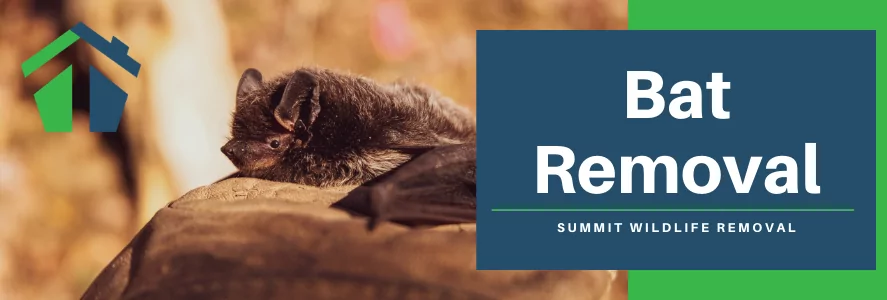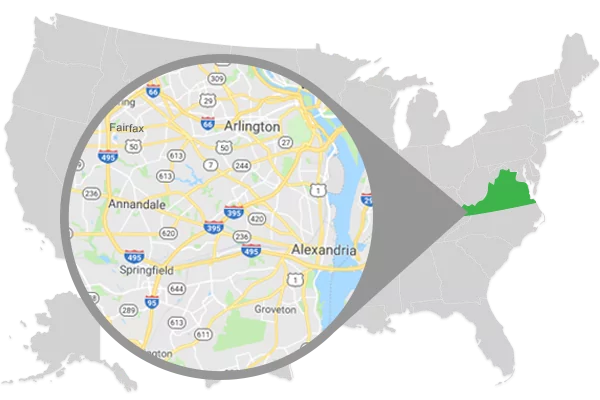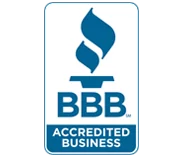Bat Removal in Fairfax, Alexandria & Arlington, VA
There are 16 species of bats in Virginia. Three (Gray Bat, Indiana Bat, and Virginia-Big-eared Bat) are federally endangered. One, the Rafinesque’s Big-eared Bat, is state endangered, and the remaining 12 are non-game protected species in Virginia. The Big Brown Bat, Evening Bat, and Little Brown Bat are the three bat species in Virginia that are most likely to take residence in a building.
In Virginia, bats are not considered to be a game species or a fur-bearing species. The Virginia Department of Game and Inland Fisheries (VDGIF) defines nuisance as “species found committing or about to commit depredation upon ornamental or shade trees, agricultural crops, wildlife, livestock or other property or when concentrated in numbers and manners as to constitute a health hazard or other nuisance”. However, the term nuisance does not include animals designated as endangered or threatened. The mere presence of a bat does not constitute it as a nuisance.
Bats are nocturnal mammals and usually emerge at dusk. They feed on insects and can eat up to 1000 flying insects like mosquitoes in an hour. Bats live in dark spaces like attics, basements, chimneys, and crawl spaces where they can wreak havoc on your property.
Their droppings, also known as bat guano, is a major health hazard to humans and pets. After a while, large piles of droppings form. Not only does guano and urine corrode wood and metal, but the weight of all the bat guano can collapse the ceiling below the attic.
Schedule a FREE
Estimate
Fields with (*) are required.
Fields with (*) are required.
Bats in North America hibernate during the colder months. They roost in large colonies in attics, chimneys, churches, under bridges and fly out in large clusters. A bat in your home could be a one-time incident. And it could also be a telltale sign of a bat infestation in your attic.
Rely on the Pros for Bat Removal, Bat Abatement, & Clean-Up
To remove bats from your home, you need to call a professional. Not only is it dangerous to try to remove a bat in the attic by yourself, but it is also illegal to kill a bat.
All bats are federally protected. It is best to contact a Wildlife Control Specialist to safely and humanely remove bats from chimneys, attics, churches or any dwelling. Their roosting sites turn into toxic messes. The clean-up of bat guano presents a huge health concern. Wearing leather gloves, a respirator mask, and following safety practices is very important. You never want to touch a bat with your bare hands, especially dead bats. Although a dust mask provides some protection against dust, molds, and insulation fibers, it does not protect against viruses.
What Diseases are Spread by Bats?
By far the main issue when it comes to bats as opposed to other pests is not so much the damage but more so the risk of disease transmission from bats to humans. When bats start to inhabit human environments the risk of a potentially fatal disease being passed to a human is real and, therefore, needs addressing. The diseases most commonly associated with bats are histoplasmosis and rabies.
Histoplasmosis
Histoplasmosis is a respiratory disease that is caused by the fungus Histoplasma capsulatum, which is found in bat droppings. The fungus produces spores that when they become airborne can infect humans by inhalation alone. Symptoms of the disease can be flu-like, to begin with, and also affect vision, hearing, and the heart’s performance. The illness may further develop into a fever, blood abnormalities, pneumonia, and even death.
Rabies
By no means do all bats carry the rabies virus, but a small percentage do. When rabies has infected a bat it will make it very sick and so any bat that you encounter flying about could possibly have rabies, though the chances are low.
Bats do not generally attack humans but may attack if humans attempt to capture or handle them, especially if they are rabid or sick. If you or your pet has been bitten by a bat, in particular, a sick bat, you should attempt to catch the bat with tongs, preserve it, and get medical assistance immediately.
There is a rabies vaccine that can be effective if given prior to the onset of symptoms; however, once symptoms start to show, the disease is nearly always fatal. In fact, there have been only six known survivors of the rabies virus.
For more information regarding health questions, please contact the Center for Disease Control.
Bat Prevention Methods
- Get your home inspected by a licensed wildlife control specialist
- Seal entry points to your home
- Perform professional-grade repairs
- Install vent, ridge, and roof guards
- Bat exclusion or release of the bats
What fees are Associated With Bat Removal Services?
The fees associated with bat removal and control is variable. All types of bats are federally protected and it is important to avoid the spread of White-Nose Disease that is seriously affecting our bat population. Contact us now for a thorough Bat Survey. Bat surveys are a $125 fee.
What Bat-Related Services Does Summit Provide?
- Bat Colonies Removal
- Bat Control
- Bat Exclusion
- Bat Guano Clean Up
- Bat Survey
- Insulation Replacement
- Repairs
- Bat Disinfecting and Deodorizing
Trust Summit Wildlife Removal to Solve Your Bat Problem
When you have issues with bats in your house, attic or crawlspace, SES will work with state and local authorities to safely and humanely remove the bats while obeying laws and regulations.
In Virginia, it is illegal to:
- transport, release, or relocate a bat anywhere other than the property it was caught on (4VAC15-30-50), and
- poison any animal (including bat) other than rats and mice on your property (4VAC15-40-50).
It is a Federal offense to:
- “harass, harm, pursue, hunt, shoot, wound, kill, trap, capture, or collect, or to attempt to engage in any such conduct” any endangered or threatened species. (Endangered Species Act)
Contact Summit Wildlife Removal for Bat Removal in the Fairfax, Alexandria & Arlington, VA areas.
We handle all types of wild animal control, pest control, and wildlife removal services. When you need our services, contact us online or give us a call at 703-884-2124.













